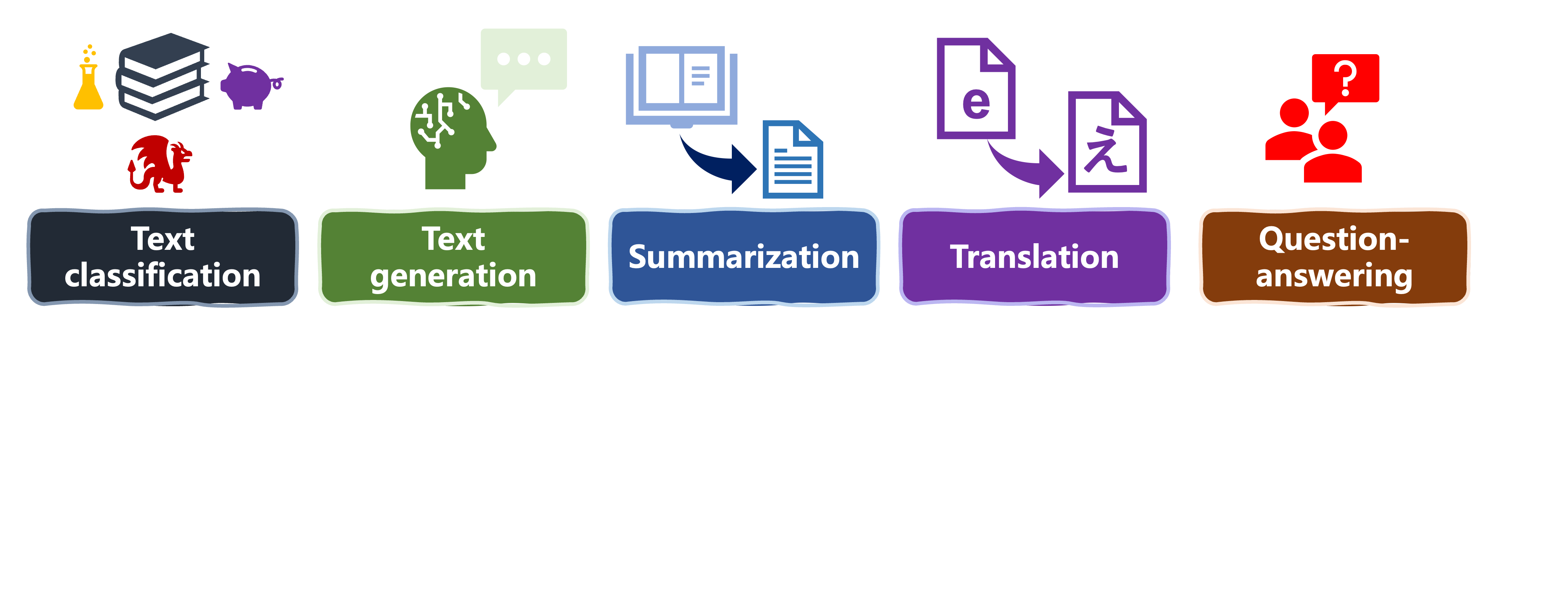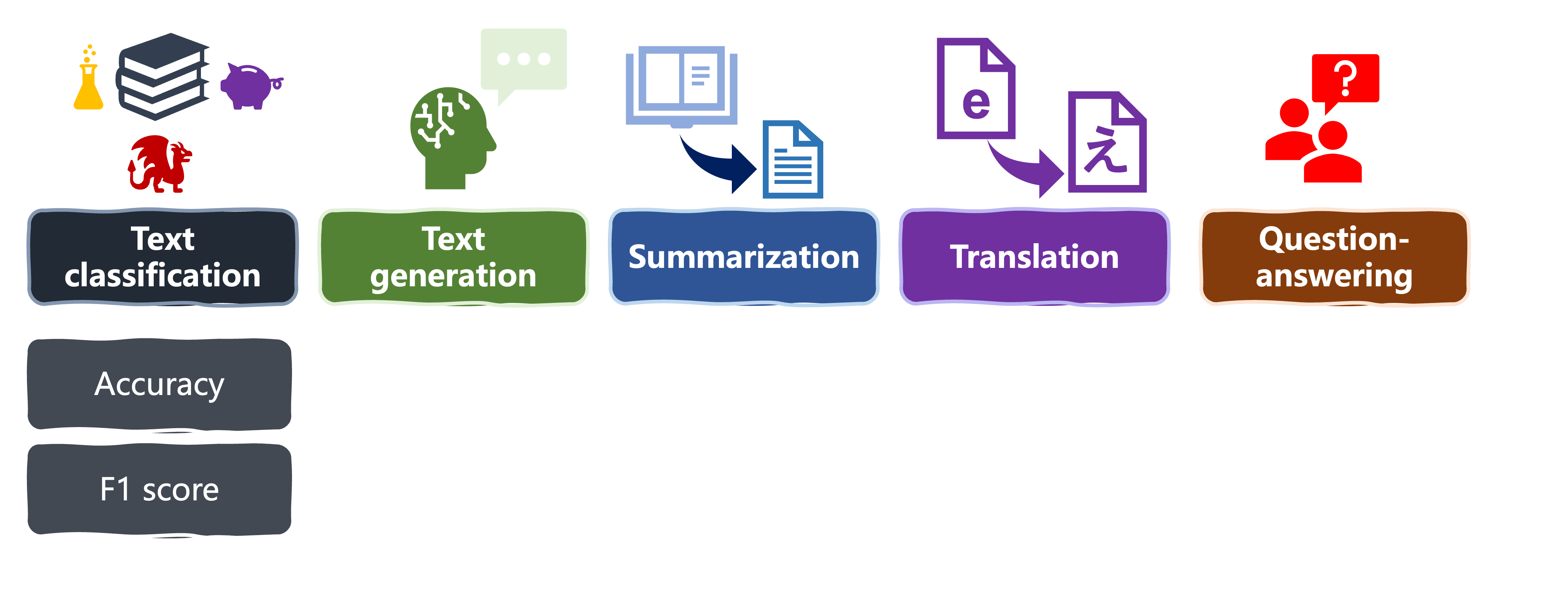The evaluate library
Introduction to LLMs in Python

Jasmin Ludolf
Senior Data Science Content Developer, DataCamp
The evaluate library
import evaluateaccuracy = evaluate.load("accuracy")print(accuracy.description)
Accuracy is the proportion of correct
predictions among the total number of cases
processed. It can be computed with:
Accuracy = (TP + TN) / (TP + TN + FP + FN)
Where:
TP: True positive
TN: True negative
FP: False positive
FN: False negative
- Metric: evaluate model performance based on ground truth
- Comparison: compare two models
- Measurement: insight on dataset properties
Features attribute
print(accuracy.features)
{'predictions': Value(dtype='int32', id=None),
'references': Value(dtype='int32', id=None)}
Inspecting required inputs by a metric
'predictions': model outputs'references': ground truth.features: indicates the type supported for class labels, e.g.'int32'or'float32'
f1 = evaluate.load("f1")
print(f1.features)
{'predictions': Value(dtype='int32', id=None),
'references': Value(dtype='int32', id=None)}
pearson_corr = evaluate.load("pearsonr")
print(pearson_corr.features)
{'predictions': Value(dtype='float32', id=None),
'references': Value(dtype='float32', id=None)}
LLM tasks and metrics

LLM tasks and metrics

Classification metrics
accuracy = evaluate.load("accuracy")
precision = evaluate.load("precision")
recall = evaluate.load("recall")
f1 = evaluate.load("f1")
from transformers import pipeline classifier = pipeline("text-classification", model=model, tokenizer=tokenizer) predictions = classifier(evaluation_text)predicted_labels = [1 if pred["label"] == "POSITIVE" else 0 for pred in predictions]
Metric outputs
real_labels = [0,1,0,1,1]
predicted_labels = [0,0,0,1,1]
print(accuracy.compute(references=real_labels, predictions=predicted_labels))
print(precision.compute(references=real_labels, predictions=predicted_labels))
print(recall.compute(references=real_labels, predictions=predicted_labels))
print(f1.compute(references=real_labels, predictions=predicted_labels))
{'accuracy': 0.8}
{'precision': 1.0}
{'recall': 0.6666666666666666}
{'f1': 0.8}
Evaluating our fine-tuned model
# Load saved model and tokenizer with # .from_pretrained("my_finetuned_files")new_data = ["This is movie was disappointing!", "This is the best movie ever!"] new_input = tokenizer(new_data, return_tensors="pt", padding=True, truncation=True, max_length=64) with torch.no_grad(): outputs = model(**new_input) predicted = torch.argmax(outputs.logits, dim=1).tolist()
real = [0,1]
print(accuracy.compute(references=real,
predictions=predicted))
print(precision.compute(references=real,
predictions=predicted))
print(recall.compute(references=real,
predictions=predicted))
print(f1.compute(references=real,
predictions=predicted))
{'accuracy': 1.0}
{'precision': 1.0}
{'recall': 1.0}
{'f1': 1.0}
Choosing the right metric
- Be aware: each metric brings its own insights, but they also have their limitations
- Be comprehensive: use a combination of metrics (and domain-specific KPIs where possible)

Let's practice!
Introduction to LLMs in Python

